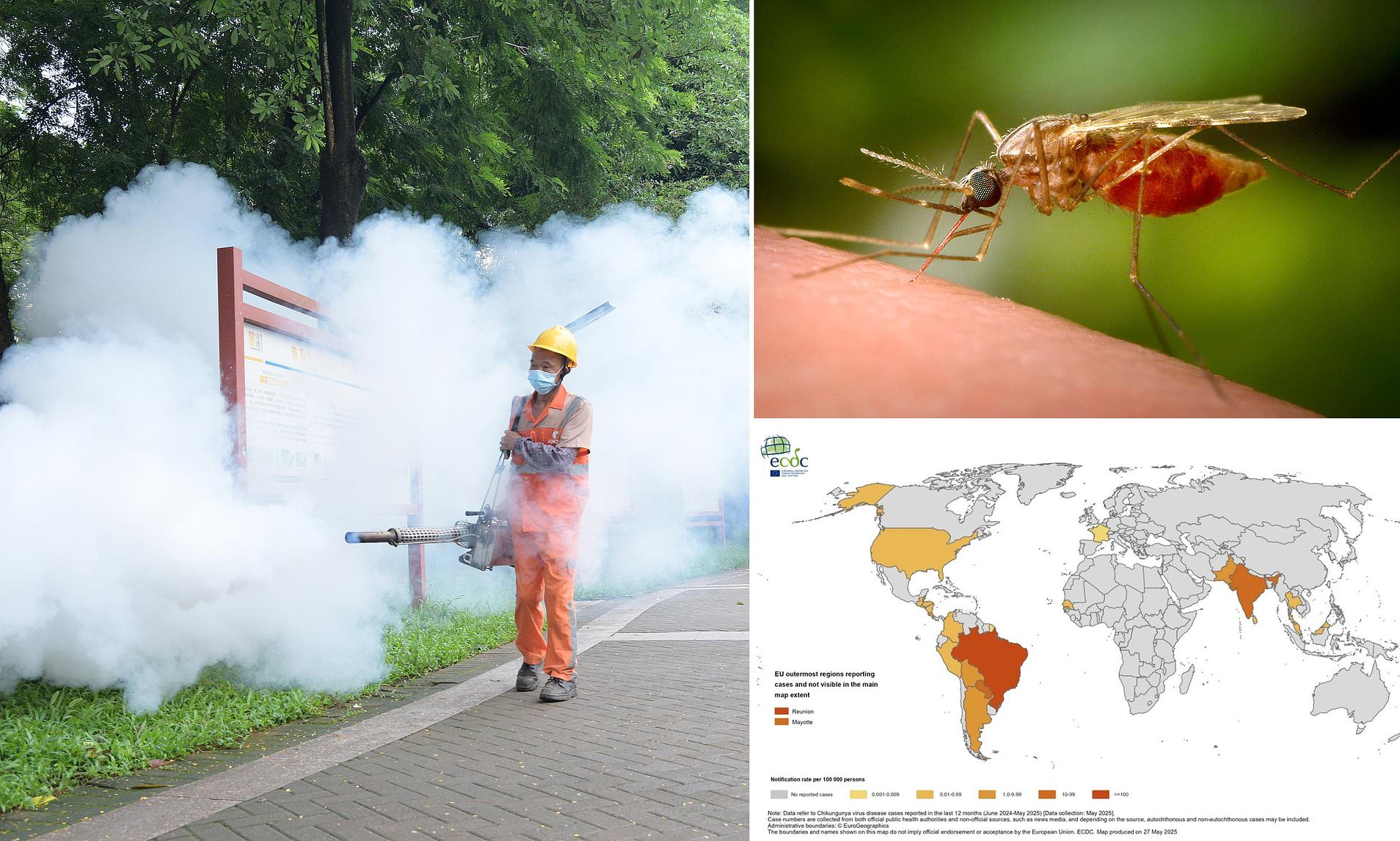
Chikungunya Cases Surge Globally, Prompting Travel Warnings
Health authorities worldwide are raising concerns about a significant increase in chikungunya virus infections, particularly among travelers. The mosquito-borne disease, while rarely fatal, can cause debilitating symptoms and, in severe cases, lead to organ damage. The recent surge in cases has prompted calls for increased vigilance and preventative measures, especially for those planning trips to affected regions.
Understanding Chikungunya
Chikungunya is a tropical disease primarily transmitted through the bites of infected mosquitoes. The most common symptoms include a sudden onset of fever and intense joint pain, often affecting multiple joints simultaneously. While most individuals recover fully within a week to ten days, some may experience persistent joint pain and arthritis for months or even years.
In addition to fever and joint pain, some patients may develop eye complications, neurological issues, heart problems, and gastrointestinal complaints. A small percentage of individuals can develop a severe form of the disease, potentially leading to multiple organ failure and, in rare instances, death.
Recent Surge in Cases
Recent data indicates a worrying trend in chikungunya cases globally. The World Health Organization (WHO) issued an alert following a significant rise in infections across various regions. For example, Chinese officials recently reported thousands of cases, primarily concentrated in the southern city of Foshan within the Guangdong province. Major outbreaks have also been reported in popular tourist destinations in the Indian Ocean, including La Réunion, Mayotte, and Mauritius.
The European Centre for Disease Prevention and Control reports a substantial number of cases and related deaths across multiple countries this year. This increase highlights the expanding geographical reach of the virus and the potential risk to travelers visiting affected areas.
Risk Factors and Prevention
The primary mode of transmission for chikungunya is through mosquito bites. The mosquitoes that carry the virus cannot survive in certain climates, meaning there is currently no risk of contracting the virus locally. However, the virus can be found in parts of Southern Europe.
Experts emphasize the importance of taking precautions against mosquito bites, especially when traveling to regions where chikungunya is prevalent. Recommended preventative measures include:
- Using insect repellent: Applying insect repellent regularly, particularly those containing DEET, picaridin, or IR3535, can significantly reduce the risk of mosquito bites.
- Wearing protective clothing: Covering exposed skin with long sleeves, long pants, and socks can minimize the chances of being bitten. Loose-fitting, light-colored clothing is preferable, as it allows easier detection of mosquitoes that may have landed on the fabric.
- Sleeping under insecticide-treated bed nets: Using bed nets treated with insecticide can provide a barrier against mosquito bites while sleeping, especially in areas where mosquitoes are active at night.
- Avoiding areas with high mosquito populations: Staying away from stagnant water sources and areas with dense vegetation can help reduce exposure to mosquitoes.
Vaccination
Two vaccines are currently available to protect against the chikungunya virus. One vaccine is approved for individuals aged 18 to 64, while the other is for those 12 years and older. In some countries, the vaccine is recommended for travelers visiting regions where the virus is present. Individuals planning travel to high-risk areas should consult with their healthcare provider to determine if vaccination is appropriate.
Concerns for Pregnant Women
Pregnant women, particularly those in the later stages of pregnancy, are advised to exercise extra caution when traveling to regions with chikungunya outbreaks. Infection during late pregnancy can pose a risk to the baby. Studies suggest that infection shortly before delivery increases the risk of transmission to the newborn.
Not the Next Pandemic, But Vigilance is Key
While the increase in chikungunya cases is concerning, experts emphasize that it is unlikely to trigger a global pandemic. Previous outbreaks of similar magnitude have occurred in the past. However, climate change and the expanding geographical range of mosquito populations are contributing to the spread of the virus to new areas, including parts of Europe.
Global Spread and Impact
Historically, chikungunya was primarily found in Asia, Africa, and South America. However, recent years have witnessed the emergence of cases in Europe and the United States. The virus has also spread to other regions, including Madagascar, Somalia, Kenya, and India. Additionally, increasing case counts have been reported in various Pacific Island nations.
In the United States, all reported cases of chikungunya this year have been among travelers returning from high-risk areas.
Seeking Medical Advice
Travelers experiencing symptoms consistent with chikungunya, such as fever, joint pain, or rash, should seek medical attention promptly. Early diagnosis and supportive care can help manage symptoms and prevent potential complications.

No comments:
Post a Comment